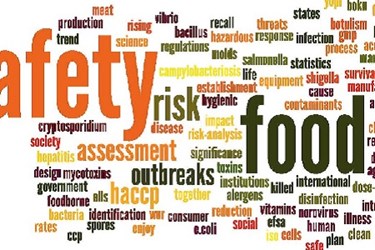Integrating HACCP Practices With Product And Service Providers
By Laurel Maloy, contributing writer, Food Online

Hazard Analysis and Critical Control Points food safety practices can be applied to both in-house and supplier-provided services and products
Hazard Analysis and Critical Control Points (HACCP) is not the be-all, do-all of food safety in the supply chain. Rather, it is just one part of the process; a process that starts with identifying each of the aspects critical to food safety management within your operation. In order to be successful at the most basic level, you need to break your operation down into the smaller, more easily manageable elements integral to the production of your product. For example, the most common denominators in all food processing operations are:
- Raw Material Control & Monitoring
- Sanitation
- Chemical Use
- Allergen Monitoring
- Pest Control & Management
- Supplier/Vendor Management
- Distribution/Receiving/Storage Management & Control
- Traceability
- Recall Protocols
Once you’ve done that, what seemed unmanageable has become much more controllable. Now you can get down to business by developing an HACCP program for each element, most of which will depend upon your suppliers. For each component, you should first identify the supplies that are critical to food safety, such as the raw and/or processed ingredients. Next, ascertain what packaging materials are utilized and which chemicals are required for such things as cleaning and pest control. Include all lubricants and other supplies needed for routine maintenance and major repair. And don’t forget to include the things you may take most for granted, such as software programs or operating systems.
Achieving Global Certification In Food Safety & Quality
In the new and improved world of global food safety, doing things the way they’ve always been done is not necessarily the best or the most economical way. One large-scale recall and the resulting fall out could bankrupt even a large, well-established food processing operation. Bear in mind the Food Safety Inspection Service (FSIS), will now have the authority to shut your operation down. The best defense is most often a better offense; this is not just trite ideology.
Re-examine all of your suppliers and determine the reasoning behind maintaining the relationship. Look at everything from mechanical calibration to laboratory testing. Compare the costs of farming out the work to doing it in-house. The comparison should include not only the tangible costs, but those not so readily apparent, such as the response time, customer service, and the intimate understanding of every aspect of your particular food processing facility. Consistent grumbling about a supplier’s product or service is a disaster waiting to happen. You should listen if your managers or employees are complaining; hold your suppliers to a higher standard. If a supplier cannot handle the mundane, what is the probability of a timely and successful resolution during an emergency?
HACCP — The Effort Needed For Implementation
A supplier known for deflecting blame, finger-pointing, and not accepting responsibility for its shortcomings is not deserving of your trust. It only takes one publicized incident to tarnish an otherwise stellar reputation.
Create and maintain a matrix by which to measure your suppliers. Group them according to the product or service provided, making comparison easier, and ensure each supplier is being consistently monitored. A quarterly report may be adequate for many suppliers, though frequency may dictate more frequent monitoring for others. Having clear and unwavering service and product standards in place will ensure the most professional and mutually satisfying supplier relationships. Your matrix may include:
- Product/Service Provided w/link to Contractual Obligations
- Cost Per Service or Per Unit
- Frequency
- Outcome
- Successes
- Shortcomings
- Failures
- Customer Service Contact
- Supplier Responsiveness w/link to Extensive Notes
- Exceptional
- Very Good
- Good
- Fair
- Poor
- Nonexistent
- Date Service Performed
- Date for Recurring Service
- Cross-Reference Lot/Batch Numbers as Required for Traceability
Providing the above report to the appropriate supplier may provide opportunity for growth and improvement. It can also provide positive feedback in the event certain aspects of performance are exceptional. Ranking them within groups may supply incentive for perfection.
Finally, keep thorough and complete records. This is sorely lacking in many facilities, though it can easily be the most critical factor in the event of traceability, recall, and/or litigation. In other words, Cover Your Assets (CYA). Pointing the finger of blame has no credence unless the evidence is there in black and white.
